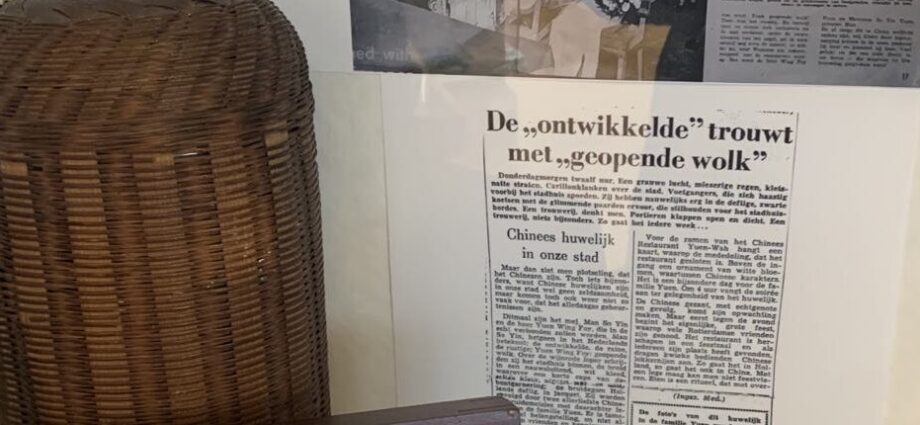My name is Lulu and I am a visiting scholar at the University of Amsterdam from Beijing, China. I am currently working at an archival heritage project on Chinese communities, supervised by Charles Jeurgens, Professor of Archival Studies at the department of Media Studies at UvA. The goal of the project is to enrich the perspectives on Chinese communities and their archival heritage in the Netherlands, by inviting various stakeholders to talk about this topic around one table. As part of this research project, I interviewed people connected to the Chinese community, differing by age, area, country, etc. Our work on this project can also be seen as the “pre-stage” for the Amsterdam Time Machine project, since community archival heritage should be widely considered as a major block to build the digital memory of the city of Amsterdam. Hence my blog post on this website.
The history of Chinese community in Amsterdam can be traced back to the 1900s. Even when we look at it here and now – zooming into the layout of current Amsterdam – the Amsterdam Chinatown lies in the heart of the city, around Nieuwmarkt square. For over a hounded years, the Chinese community has merged into, and contributed to making the city. During this period, hundreds of Chinese archival heritage documents have been created, reflecting the life, work, and other contributions of the Chinese community to the development of the city. Now, when we try to shape the memory of Amsterdam as an international city with a rich history of immigration, it is its massive archival heritage – especially the one that is deeply rooted in the Chinese community – that can be used as the data infrastructure to build a virtual Amsterdam Time Machine.
One of the main points of interest of the archival heritage of the Chinese community in Amsterdam is that it is produced and cultivated by the community itself, with a bottom-up approach.
Among the interviewees for this project are Laura Chen, a Chinese-Dutch image maker and writer; Fenmei Hu, a visual artist and cultural entrepreneur who migrated to the Netherlands at 9; Minhong Yu, a Chinese researcher and visual designer who currently lives and works in the Netherlands; Karina Meeuwse, a Dutch writer and filmmaker who has been conducting research on the Chinese community for over 20 years; and also representatives from the Hehua temple, a Chinese Buddhist Temple in Amsterdam Chinatown; Imagine IC, a public benefit institution who provides an open floor for negotiation about the composition of the Amsterdam collection; the International Institute of Social History, a research institute which collects Chinese archival heritage and researches Chinese history. The overall goal of these multi-discourses is to observe how different members of the Chinese community are labeling and de-labeling their identity, and understanding how they wish to be remembered by Amsterdam through collecting, using, and deploying their archival heritage.
As our interviews went deeper and wider, one of the main findings is that family is the basic social unit for the Chinese community to archive their past. This leads to a widely distributed archival heritage of family islands, just like the scattered Chinese restaurants in Amsterdam. When we zoom out, looking at it as a holistic community, the influencers (most of them working in the art-related industry) jumped to our eyes as leaders in the community, particularly due to their urge to create their own story in order to make sense of their identity in the city. This is where Chinese archival heritage started to be collected, organized, and exhibited to the public.

